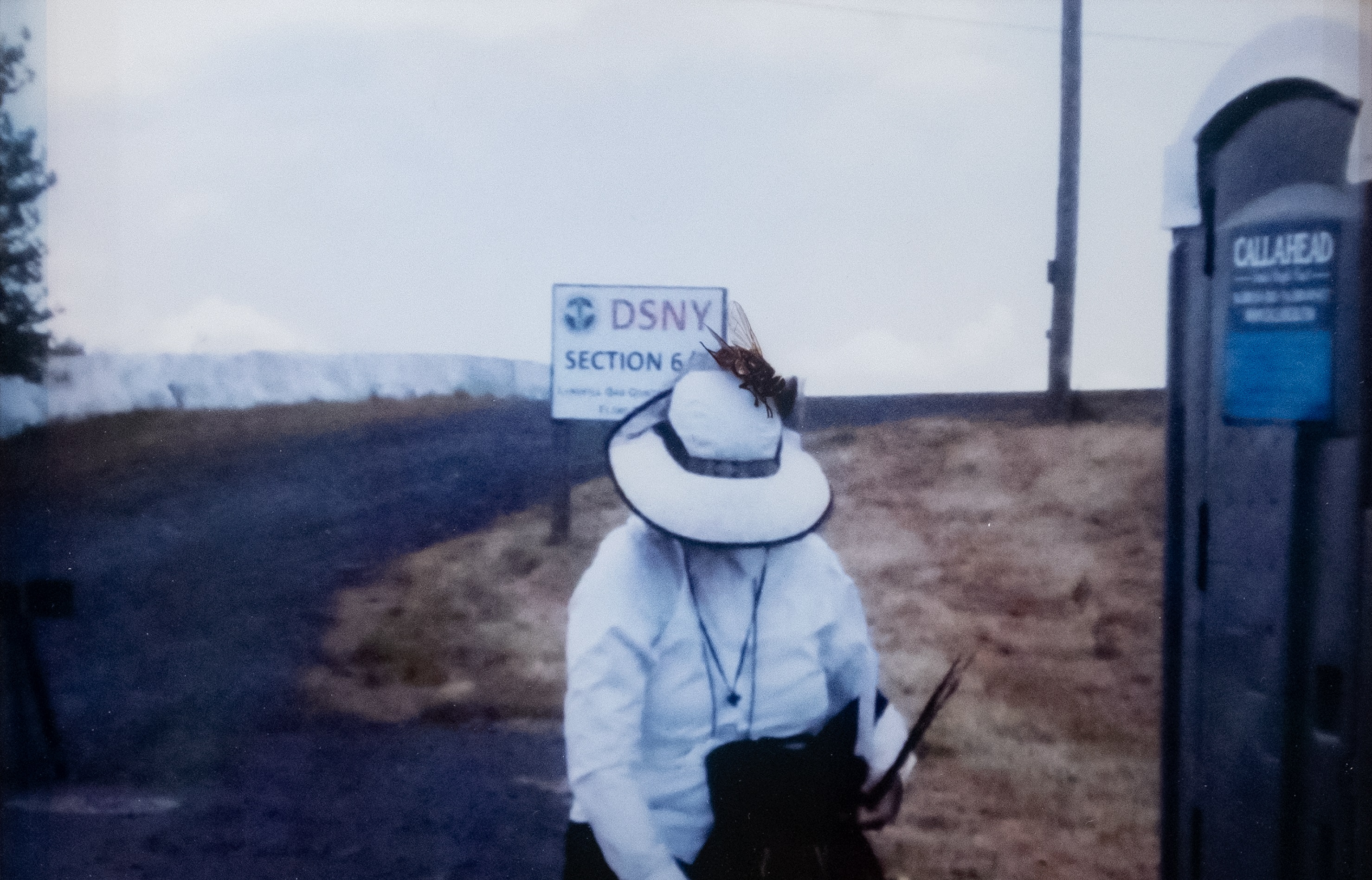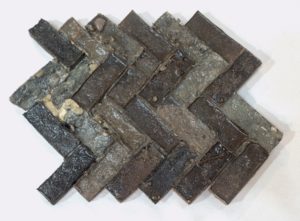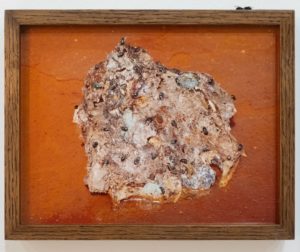Artist Sophie Friedman-Pappas Transforms Waste at Freshkills Park

Since its inception, the Freshkills Park team has fostered partnerships with artists from a variety of disciplines in an effort to document this preliminary phase of park development through creative expression. Over time, a number of works have emerged, ranging from ink studies produced within the confines of an old shipping container to bound notebooks created from the park’s ubiquitous invasive Phragmites plant. In March of this year, a new partnership was formed, this time involving Brooklyn-based artist Sophie Friedman-Pappas, who utilizes multiple mediums to re-appropriate discarded items and examine the relationship between past and present at Freshkills Park. Recently, we sat down with Sophie to discuss what brought her to Freshkills, how she is utilizing a variety of materials to regenerate waste, and her view of the landfill cap as not just a set of protective layers but also as a perceptual barrier between the processes occurring underneath and the regeneration occurring above.
FKP: What drew you to Freshkills Park and how did you end up establishing it as a project site?
SF-P: My sculptures are always constructed of discarded materials: eggshells and egg cartons, Styrofoam, flies found stuck on a fly trap. I intercept waste objects before they are laid to rest in landfills or bodies of water. But rescuing the discards made me wonder what I was rescuing them from. Where would they be if I hadn’t adopted them? This question led me to Freshkills Park.
FKP: Tell us about your project at Freshkills.
SF-P: I use photography and sculpture to acknowledge the prominent progress made atop the capped mound while also pointing to the existing ecosystem that lies beneath it. Aging detritus is under the picturesque surfaces of the park: toys, bags, shoes. The lifespans of the pieces vary. Some take two weeks to decay, others decades, and others are virtually immortal. The life of the old waste persists under the Freshkills covers. It is the tension between the landfill’s masked animacy and the park’s fledgling wildlife that holds my attention.
FKP: Your work at Freshkills involves the use of different mediums such as photography and sculpture. How do these different mediums come together and co-exist within the work as a whole?
 SF-P: When I began my visits to Freshkills Park, I collected sticks, stones, and plastic bags that had washed up onto the shores of the river that runs through the park. Reappropriating these found forms, I created sculptures bound together with a collagen-based adhesive made of discarded bones and rawhide, which I then reintegrated into the park landscape to be surreptitiously photographed (by me and Timothy R. Mahoney).
SF-P: When I began my visits to Freshkills Park, I collected sticks, stones, and plastic bags that had washed up onto the shores of the river that runs through the park. Reappropriating these found forms, I created sculptures bound together with a collagen-based adhesive made of discarded bones and rawhide, which I then reintegrated into the park landscape to be surreptitiously photographed (by me and Timothy R. Mahoney).
Also, in response to my time spent at Freshkills Park, I created a brick from the topmost layer of Freshkill Park’s ground, the layer that masks the landfill itself. My self-titled “bone bricks” are an aggregate of phragmites, sand, and goose poop held together with the same collagen-based adhesive found in my sculptures.
FKP: What has been different about the experience of creating art at Freshkills compared to past projects?
SF-P: On each one of my site visits, a staff member from Freshkills Park drove me to the park and accompanied me to every sector of the park that I wanted to investigate. Originally I was conscious of these staff people as chaperones, but that faded fast and we always ended up talking as I visited. These conversations shaped the way that I looked at the park and impacted what objects I retrieved.
Because of this observational collaboration that proved to be so productive, the next phase in this site-specific endeavor will be for me to lead a workshop onsite at Freshkills Park for students on Staten Island. This coming spring, I hope to facilitate similarly responsive discussions and drawings about our surroundings at the park.
FKP: Have any particular themes or lessons emerged as you have worked on this project?
SF-P: When I started I had a general idea (and a proposal) talking about the repopulation of the Freshkills grasslands in terms of the Deucalion and Pyrrha myth. They repopulated the earth by throwing their mother’s bones behind them — this is the root for my bone bricks and collagen-based adhesive.
 FKP: What do you find most enjoyable about creating this work at Freshkills?
FKP: What do you find most enjoyable about creating this work at Freshkills?
SF-P: During my time on the project I developed new systems of making, in particular the collagen-based glue that now serves as the adhesive in all my work and the binder in the bone bricks. This adhesive causes these small bricks have a glossy topside. They look like millionaire bars when dry. They’re stackable and durable.
FKP: What plans do you have for the project when it is complete?
SF-P: I’d like to extend these ideas with some version of the sculptures and structures I’m working on now (and the sculptural process I’m using to make them) but in response to another location that is masked in order to make way for new life. I have a few sites in mind here in New York City.
Learn more about Sophie Friedman-Pappas and her other projects on her website.
For more updates on art projects occurring at the park and to find out about upcoming exhibitions, sign up for our newsletter and follow @freshkills park on Twitter, Instagram, and Facebook.




